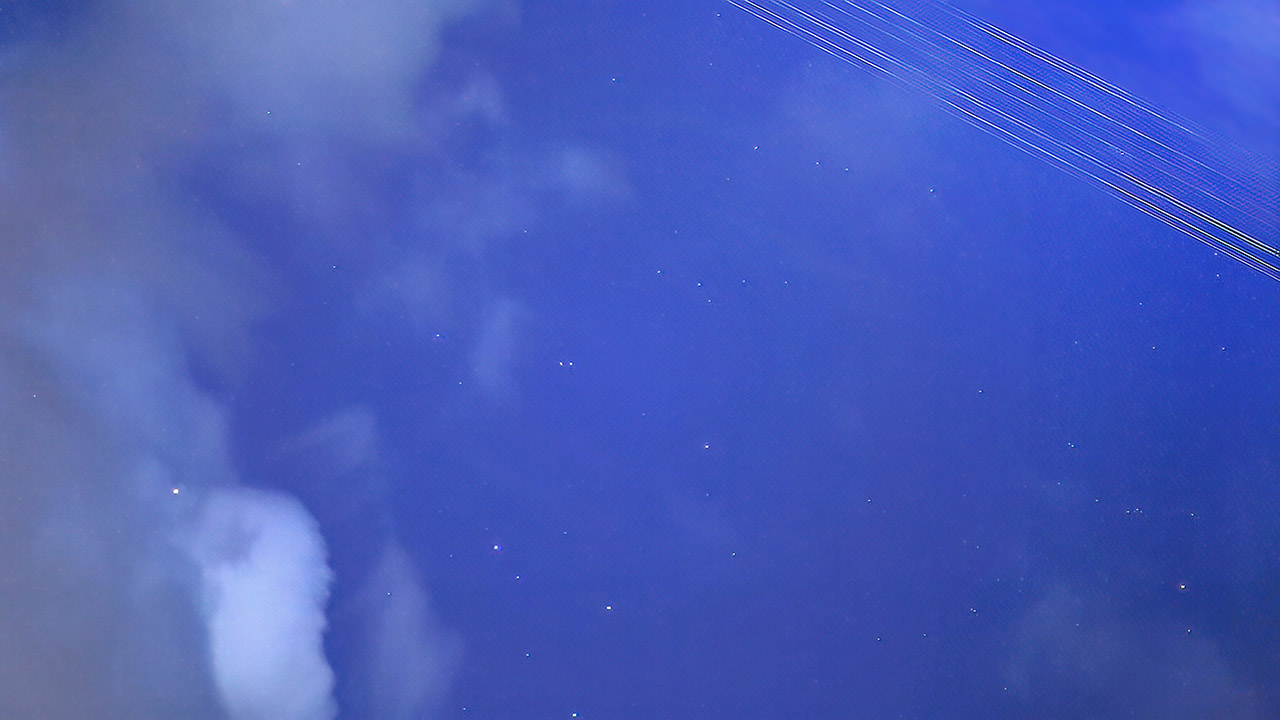Starlinks!
2021/05/06. Got 'em. But just barely. I almost missed. The Starlink satellites of the 24th launch (the class of April 29, 2021, only about a week in orbit) sailed by just north of Arcturus (the star in the clouds at lower left).

Newly-launched Starlink satellites cloud-skipping through Bootes in bright twilight.
Canon 6D, 105mm F1.4, 1/30s, ISO 6400, HD video mode, tracked on LXD-55 mount.
The sky was still bright and I knew only to put Arcturus in the bottom left of the frame and when to push the button. Between the clouds and the bright sky, I saw nothing despite scanning the right area with 14x70's. Go figure. I could barely make out Arcturus. But if you composite a couple of hundred video frames, layer them, stack them, and otherwise persuade them to show you what they know, then there they are.
2021/05/08. Under heavy clouds, I tried again for the April 29th constellation. I expected to shoot a bowl full of satellites as they filled the Dipper, but I should've made a second plan because that part of the sky was socked in.

Canon 6D, 105mm F2.8, 30s, ISO 400. Tracked on LXD-55 mount.
Truth to tell 90% of the sky was overcast. There was a gap to the northwest and a glance through tiny 2x23 binoculars showed the parade climbing the sky. I swung the lens over that way and aimed at a thin spot in the clouds ahead of the rising satellites. You catch nothing if you don't fish. I gave it 30 seconds. I only saw one satellite and hoped I'd caught more.
2021/05/30. A flight of Starlinks passed by Polaris in twilight and I missed all but the last few. I am always too optimistic about seeing through twilight. Shoot anyway; the camera is better at spotting these things than I am. In the video, the tail-end of the Starlink train is chased by a bat. Kinda cool. The bat is a highlight, but the clip is still not worth uploading.
2021/05/31. The Starlink satellites launched on May 26 paraded past Spica and the the stars of Virgo (in two groups). I got decent video and posted it to Facebook if you really want to find it. In addition to about 50 Starlinks, two unrelated satellites crossed the field going north. The first was launched by the USA for Taiwan in 2006 ("Formosat 3F"). I haven't identified the faint satellite that closes the show.
Just after that flight, another Starlink stream passed to the west, low in the much brighter western sky. Heavens-Above.com guessed that some would be as bright as Mv 4.5, a couple of magnitudes fainter than what usually gets me out. But since most were passing right through M44, I thought it worth worth a try. I just barely got those; it took all I know to pull them out of a series of 20 second exposures, none of which are worth showing off (or even keeping). I'm impressed that they were captured at all. Note to self: remember to engage the RA gear on the LXD-55.
While planning to catch those last two passes, I saw that the ISS would sail almost directly overhead and pass into the shadow of the Earth very near the zenith. I wondered if it would be a good chance to try to shoot the changing colors of sunset on the Station. Yeah. I think that worked. Next page!